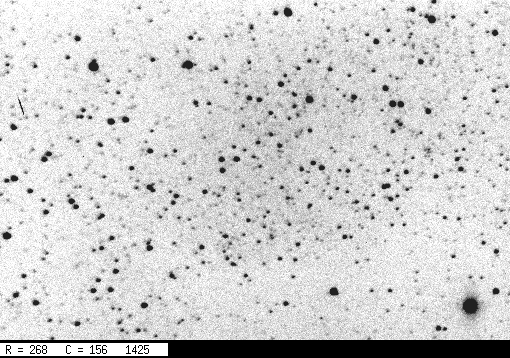
On July 29, 2003, I decided to do a little experimenting. The CBA had called off its campaign on V603 Aql, so what should we do next? Ideas:
Tom Schwarting arrived soon after dark and worked with me all night long -- which helped a lot. Stacey Davis visited briefly around 11 PM.
Since SDSS J2258 and Mars didn't rise until after midnight, I started off by trying to pick an asteroid. The ecliptic is low in the sky during the summer months, alas, so that the opposition point stays in the trees to our southeast. I moved over to the West and, using the CLEA Toolkit for Astrometry, found asteroid 1999 XZ185. It was listed as a "3" on a scale of 1 to 10, with 10 meaning "needs additional measurements badly" and 1 meaning "no real need". Still, it was bright enough (mag = 15.6) for us to see, so we tried to take pictures. Below is an unfiltered, 30-second exposure: it shows stars clearly down to about mag 16:

Surprise, surprise: the ecliptic passes through the Milky Way at this point. Sigh. We were unable to pick out the asteroid, even after blinking images taken 20 minutes apart.
When SDSS J2258 rose, we took some unfiltered 30-second exposures of it. Here's one:
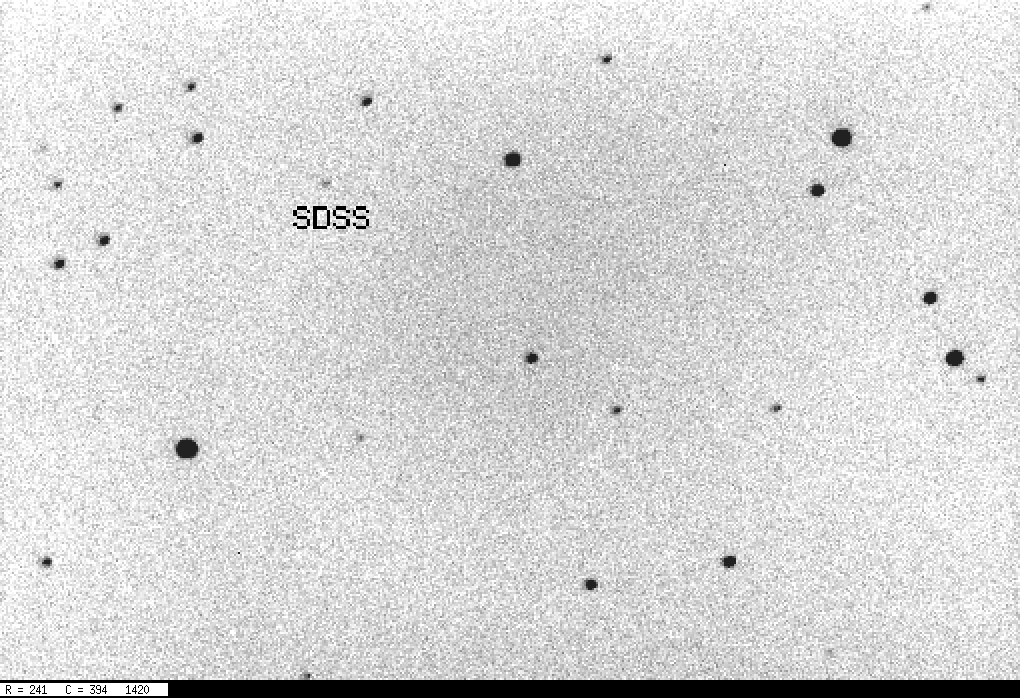
The target is the faint object just above the word "SDSS". It is clearly too faint for any accurate photometry. Rats.
Just for fun, we pointed the 12-inch at Mars. It was too bright unfiltered or with the V filter, but we could take pictures in I-band as long as we didn't bin the CCD. Here are a sample of 3 unprocessed I-band images from a set of 100 we took. The exposure time is 0.2 seconds. I suspect that importing them into Photoshop or another graph editing program would yield decent results.
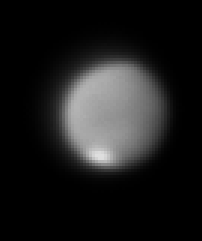
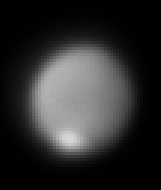
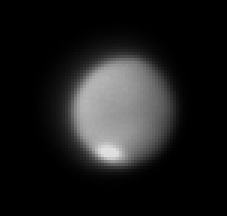
However, the 12-inch needs to be collimated before we go after Mars again. Out-of-focus stars show a clear asymmetry in the brightness of the donut of light. Collimating the telescope could make a significant improvement in images of Mars, though it's nearly irrelevant for photometry of isolated sources.